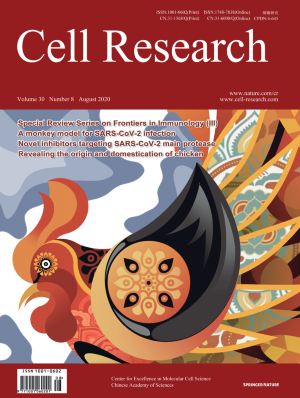
Advanced Search
Submit Manuscript
Advanced Search
Submit Manuscript
Volume 30, No 8, Aug 2020
ISSN: 1001-0602
EISSN: 1748-7838 2018
impact factor 17.848*
(Clarivate Analytics, 2019)
Volume 30 Issue 8, August 2020: 649-659 |
Metabolic signaling in T cells
Justin A. Shyer1 , Richard A. Flavell1,2,* , Will Bailis3,*
1Department of Immunobiology, Yale School of Medicine, New Haven, CT, USAThe maintenance of organismal homeostasis requires partitioning and transport of biochemical molecules between organ systems, their composite cells, and subcellular organelles. Although transcriptional programming undeniably defines the functional state of cells and tissues, underlying biochemical networks are intricately intertwined with transcriptional, translational, and post-translational regulation. Studies of the metabolic regulation of immunity have elegantly illustrated this phenomenon. The cells of the immune system interface with a diverse set of environmental conditions. Circulating immune cells perfuse peripheral organs in the blood and lymph, patrolling for pathogen invasion. Resident immune cells remain in tissues and play more newly appreciated roles in tissue homeostasis and immunity. Each of these cell populations interacts with unique and dynamic tissue environments, which vary greatly in biochemical composition. Furthermore, the effector response of immune cells to a diverse set of activating cues requires unique cellular adaptations to supply the requisite biochemical landscape. In this review, we examine the role of spatial partitioning of metabolic processes in immune function. We focus on studies of lymphocyte metabolism, with reference to the greater immunometabolism literature when appropriate to illustrate this concept.
https://doi.org/10.1038/s41422-020-0379-5